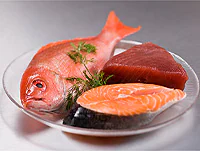3 min read
Written by Annette Carroll

Many consumers think of fish or seafood as the healthy option and the seafood industry has the numbers to attest to that. In the US the industry leapt to $80.2 billion in 2010 and Canadians apparently have a similar appetite for fish. The December issue of Consumer Reports sheds further light on an important issue: the widespread mislabeling of seafood, using DNA testing to confirm their results.
The following post was written by Justin Boevers on the Fresh Ideas blog.
When you eat a piece of seafood, how do you know if you’re really getting what you ordered? The “Mystery Fish” story in the December issue of Consumer Reports sheds further light on an important issue: the widespread mislabeling of seafood. This particular study found that nearly 50% of seafood tested in the New England area was incorrectly labeled. Many other studies have found similar results. To help you navigate this topic, Justin Boevers from FishChoice has created the following tips to cut through the confusion.
Here are some of the major problems caused by seafood mislabeling:
- Food Safety — the actual seafood species may contain contaminants that might not be expected of the species identified on the label.
- Undermines Choice — consumers trying to make responsible seafood choices are prevented from doing so when what they buy according to the label doesn’t match the fish inside.
- Abundance Confusion — consumers get mixed messages when they hear that certain fish are no longer abundant, but see these species’ names on mislabeled menus and packaging.
Some of the most common types of seafood mislabeling:
- Farmed salmon being sold as wild salmon
- Imported farmed shrimp being sold as wild, domestic shrimp
- Tilapia being sold as red snapper, especially in sushi
- Catfish and pangasius being sold as flounders and groupers
What can you do?
- Learn about the fish you like to eat. Learn the scientific name and the marketing names, the seasonality of the fish, what fish may be able to be passed off as the species in question, and eat it enough to know how it tastes differently than similar fish.
- Ask your waiter or seafood counter staff about where the fish is from and how it was caught. If they know how, where and when it was caught, then feel confident that it is correctly labelled.
- Request the species, origin and fishing/farming method be voluntarily displayed on menus, seafood cases, and packaging. Only those that are completely confident that their seafood is what they say it is will put it out there for all the world to see.
For more information, be sure to visit FishChoice.com.
Do you have additional ideas to share on seafood labelling? Leave a comment below.
Justin Boevers is the Outreach and Development Manager for FishChoice.com. Justin helps small and medium-sized business understand the issues around sustainable seafood and helps them find responsible sources. FishChoice is a nonprofit that runs a free, B2B website connecting businesses that buy or sell sustainable seafood. You can follow FishChoice on Twitter and like their facebook page to stay up to speed on sustainable seafood issues and developments.
